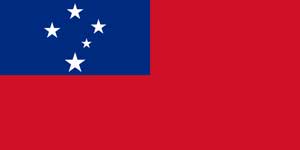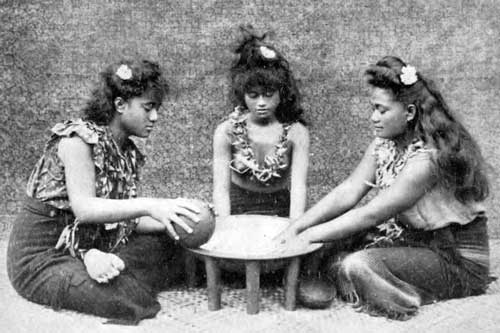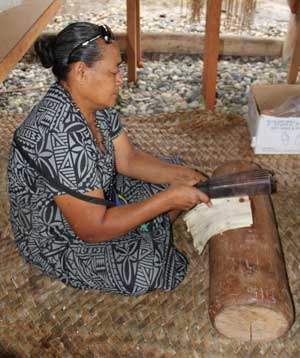Map
Flag

Quick facts
Official Name: Independent State of Samoa
Indigenous Peoples: Samoans
Official Languages: Samoan and English
Political Status: Independent nation
Capital: Apia
Population: 194,320 (2014 est.)
Greeting: Talofa
History and geography

Samoa includes nine inhabited islands on top of a submarine mountain range. The largest islands are Savai’i at 703 sq mi (1820 sq km) and Upolu at 430 sq mi (1114 sq km), on which the capital, Apia, is located. The capital and port were developed around Apia Bay and the 13 villages that surround it.
Archeologists place the earliest human settlement of the Samoan archipelago about 3,000 years ago. This date is based upon the ancient Lapita pottery shards found throughout the islands. Samoan oral history, however, extends only as far back as 1,000 AD. Whatever occurred between 1,500 BC and 1,000 AD remains a mystery, though this may have been the period of great migrations that led to the settlement of present-day Polynesia. Another mystery is that the making of pottery suddenly stopped–there is no oral tradition among the people of Samoa that explains this.
Dutch explorer Jacob Roggeveen happened upon the islands in 1722. In 1768, French Admiral Louis de Bougainville visited the islands. He was so impressed with the Samoans’ numerous canoes and their great skill in handling them that he gave Samoa its original European name, “The Navigator Islands.”
Germany took possession of the western portion of the Samoan archipelago from 1899-1914. At the outbreak of World War I, New Zealand troops took possession of the island country. Following WWI the newly formed League of Nations gave New Zealand its Mandate to administer the islands, which resulted in close ties between the two countries that still exist to this day. The newly formed United Nations extended New Zealand’s mandate until January 1, 1962, when Western Samoa, or Samoa i Sisifo as the Samoans called it, became the first independent Polynesian nation. In 1997 the island nation officially shortened its name to Samoa. Today, Samoa has a parliamentary style of government and an education system reflecting its former ties with New Zealand.
Samoa was the first Polynesian people to be recognized as a sovereign nation in the 20th century. In 1977, British Queen Elizabeth II visited Samoa during her tour of the Commonwealth.
In 2007, Samoa’s first Head of State, His Highness Malietoa Tanumafili II, died at the age of 95. He held this title jointly with Tupua Tamasese Lealofi until his death in 1963. He was the son of Malietoa Tanumafili I, who was the last Samoan king recognized by Europe and the Western World.
Arts and culture

Tapa (barkcloth) making, storytelling, song, dance, navigation and tattoos, or pe’a, which demonstrate the strong ties many Samoans feel for their culture, are Samoan artistic strengths. Samoans have practiced the art of tattooing both men and women for more than 2,000 years.
